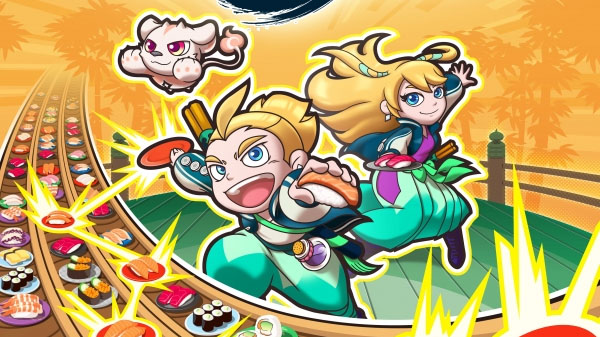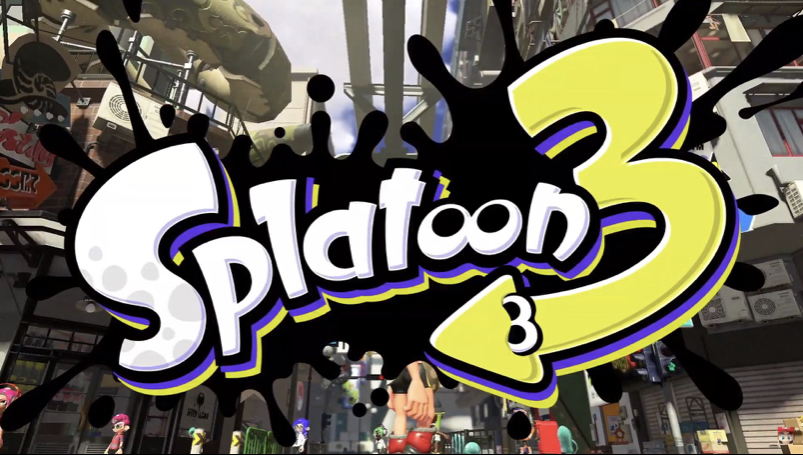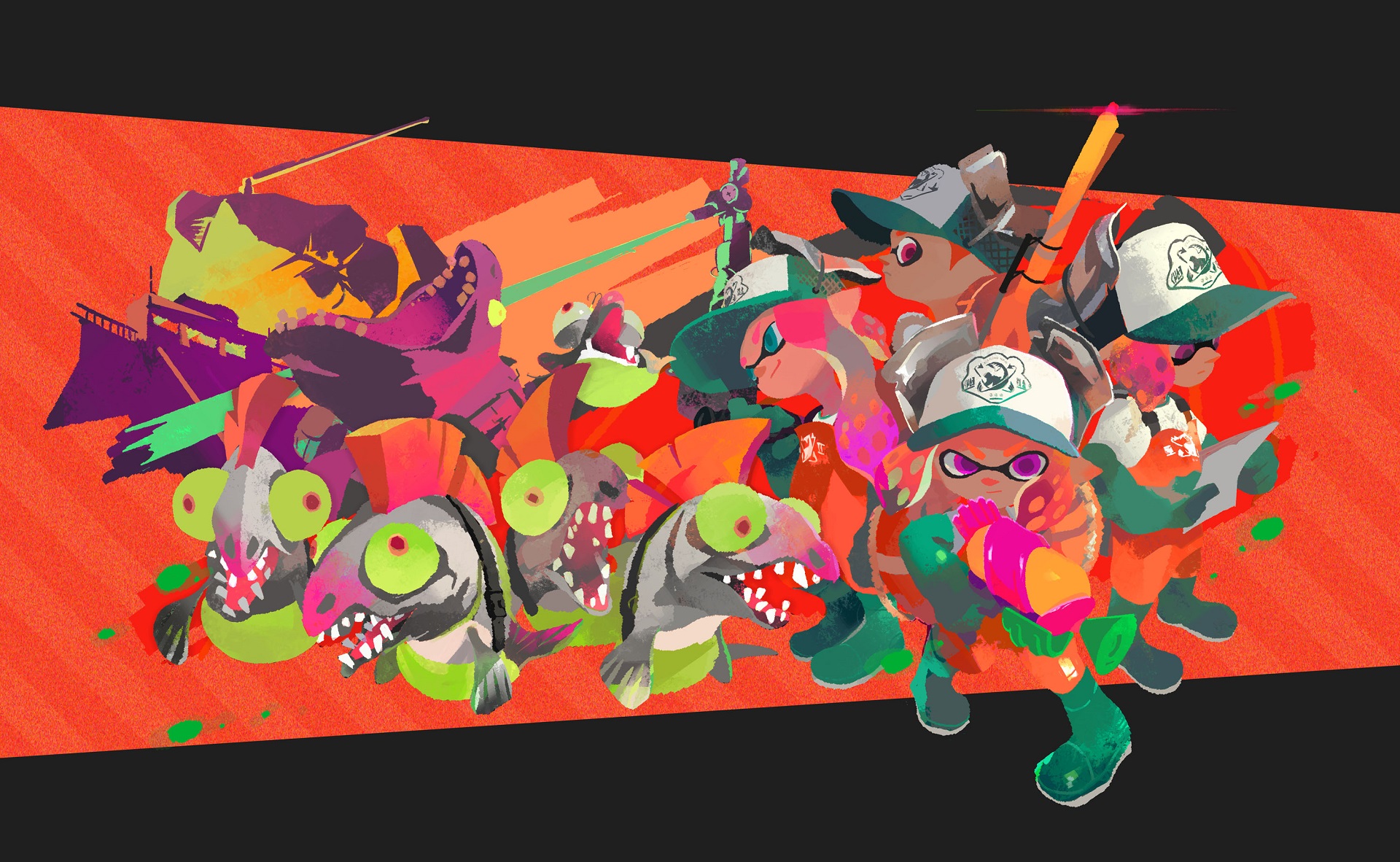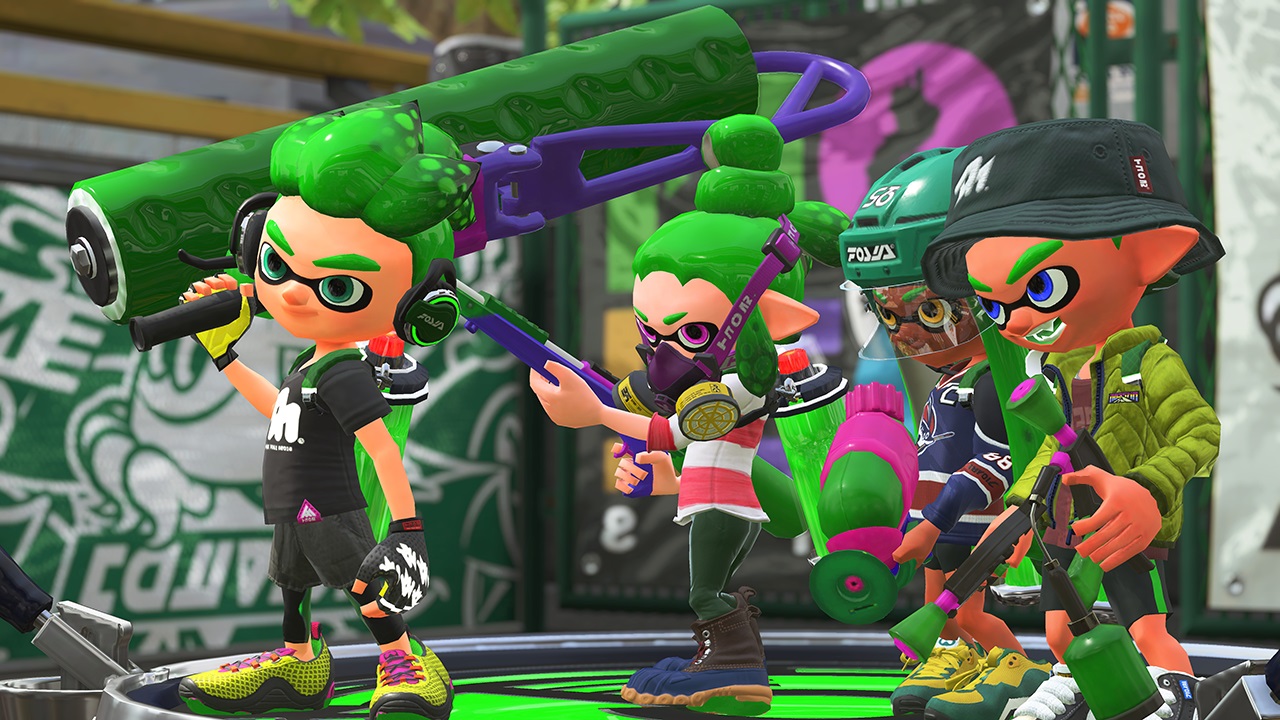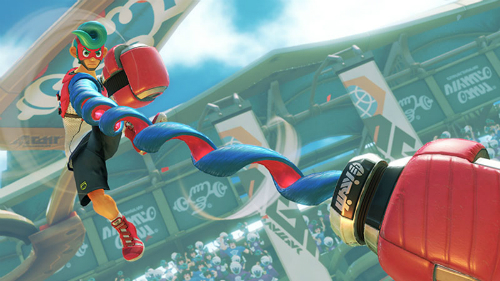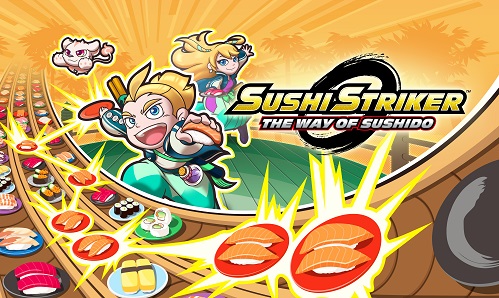
At this point in history, Nintendo are mainly known for the several famous IP they release every few years, as opposed to the creation of new IP. Every once in a while, though, Nintendo come out with a new IP or franchise, almost all of which are invariably something weird and unusual. Over the last few years we’ve seen the creation of Splatoon, ARMS and Snipperclips – games that were all unlike anything else Nintendo had released in the past and which were massively unique in the gaming landscape. Nintendo’s latest new IP doesn’t go quite this far, but the puzzle-RPG action of Sushi Striker: The Way of Sushido is unlike anything else Nintendo have released. Hiding underneath the top layer of puzzle gameplay is a game with a surprising amount of content and a dash of the collectathon that made games like Pokemon such a massive hit.
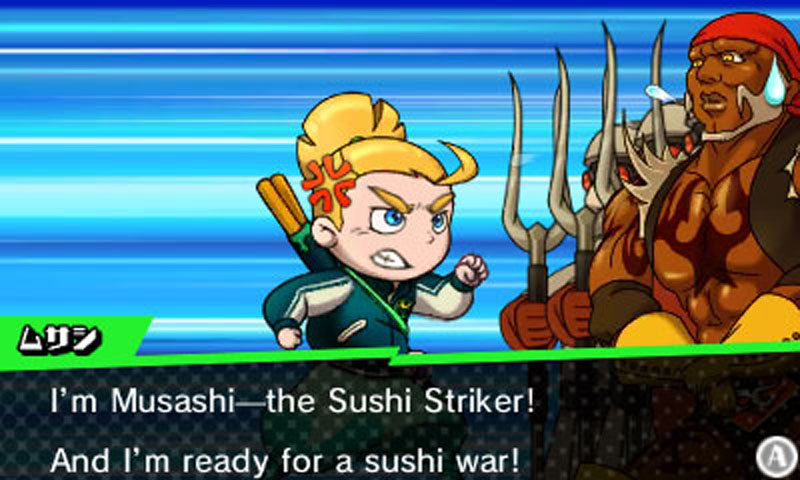
Sushi Striker: The Way of Sushido opens as your main character Musashi goes hunting for food to feed the orphanage they live in – only to have it all stolen by a local thug-child named Kojiro. Having seen this take place, a wandering stranger by the name of Franklin offers Musashi some sushi – a food that has been locked away from the general populace by the Empire. Upon learning that sushi can be infinitely generated by small creatures called sushi sprites, a series of events kicks off an adventure where Musashi goes up against the empire in an effort to bring sushi back to the world at large. If that sounds like a weird premise, that’s because it is, and Sushi Striker leans into it with gusto. Jokes and puns are rife throughout a story which never takes itself too seriously, instead sticking with a humorous vibe which goes a long way to keeping it fun and engaging. You won’t find any particularly complex narrative beats or high-quality writing here, but what’s there perfectly sets the tone for the fun adventure you’re undertaking.
Sushi continues to permeate through all aspects of Sushi Striker, not least of all the game’s battles. Taking place over a field of seven conveyer belts (3 available exclusively to you, 3 for your enemy and 1 shared between the two), summoned by your sushi sprites and covered in sushi, you’re tasked with connecting plates of the same colour together. You’ve got seven seconds in which to do this otherwise you’ll lose your stack, all while the conveyer belts are in constant motion. Once stacked, you’re able to fling them at opponents to knock down their health. Different plates have different attack values, as well as combos increasing the stacks attack value as they increase, leading to you needing to make decisions on the fly about what sushi you should target. It’s a pretty straightforward and intuitive system to grasp the basic of, and then the secondary layers to battle get rolled out as you play. On top of managing matching the sushi, locked capsules will occasionally appear on the shared conveyer belt. These give you benefits if unlocked, which requires linking them into a combo of sushi that meets the minimum number shown on it.
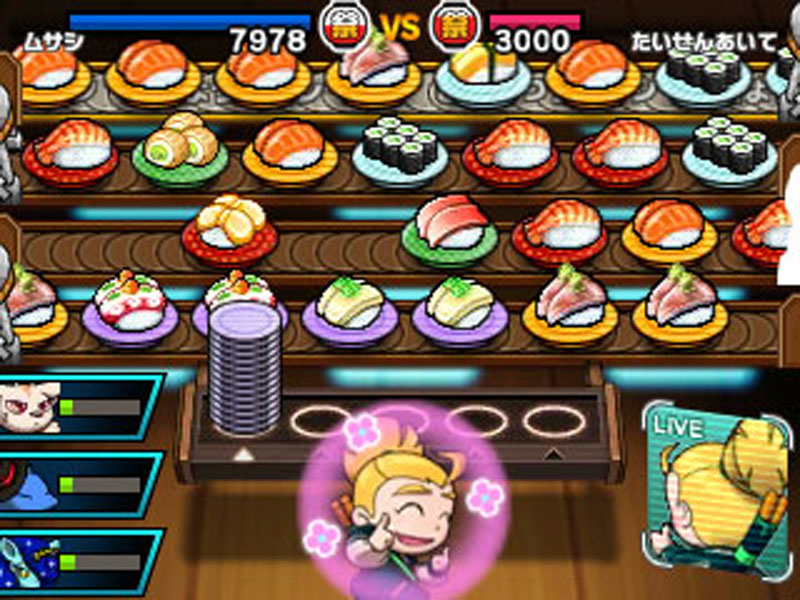
Stacking plates of sushi through your battles also has a secondary effect – charging the meters for your sushi sprite’s special abilities. These abilities are quite varied between the massive number of sushi sprites in the game and range from changing all sushi on the conveyer belts to a single colour, to changing them all into sweets which heal you and even increase the damage your stacked plates do to your opponent. This is where you can begin to really tailor Sushi Striker’s battles to your chosen playstyle. As you collect more sushi sprites throughout your playthrough by having them randomly appear after battle while using an item called a pledge plate, you can start altering the make-up of your team. I personally went for an offensive team filled with abilities that increased my damage, gave me access to additional stacks and worked to drain my opponent’s meters. Combined with picking your favourite sushi (which imparts special bonuses during battle) and lane gears (which allow you to alter how the conveyer belts function during battle), as well as gaining experience and levelling up your sushi sprites (which can also evolve into more powerful forms) and Musashi, there’s a lot more to Sushi Striker’s combat and RPG elements than I had expected.
While the story and combat make up the largest part of Sushi Striker, there is still more side content to be found within the game as you progress. This includes a ranking system you can progress through by performing feats in battle which unlock new lane gears, a local multiplayer mode to play against friends and more. My favourite of these additional modes is the Puzzle Hut, which contains a series of stationary sushi conveyer belts where you have to wipe off every piece of sushi within 5 moves and a time limit – which grows ever shorter as your progress. Suffice to say, along with the combat and RPG elements, there really is more content in Sushi Striker than I’d have expected. Which is exactly the type of surprise I want to find when I work my way through a new game.
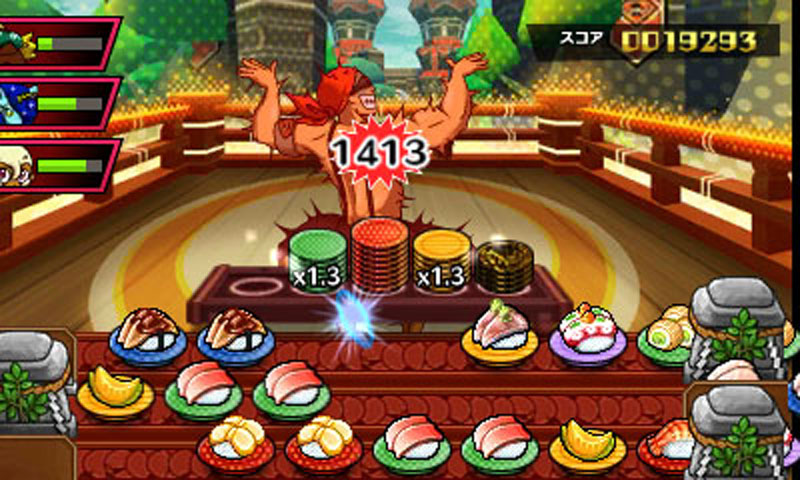
Throughout all of these modes and systems, Sushi Striker is a colourful and fun world that is light on the detail. All character models and the majority of artwork within the game is 2D, with a style reminiscent of many anime series. Beyond these the overworld is made up of ultra-simplistic polygons that look like they were pulled from a Nintendo 64 game. Going between the two styles can be quite jarring and multiple 3DS game’s in the past have shown that the console is capable of so much more. Similarly, the music in Sushi Striker is a mashup of the simple and complex, with chiptune and instruments combining together in an upbeat electronic soundtrack that is energising and fantastic to listen to. In fact, the music in Sushi Striker quickly became addictive, giving me even more reason to jump in and play more of the game.
There’s no doubt that Nintendo have opened themselves up to trying some more offbeat things with their games in recent times with varying success. Sushi Striker is one of the more successful bets, marrying together an upbeat and energetic vibe with a genre that has been known to be quite the opposite at times. It would have been nice if the game took more of an advantage of the 3DS hardware, but the excellent music, surprisingly intricate battles and wealth of content more than make up for it.
- Large amount of content to play
- Surprisingly customisable combat
- Great energising sountrack
- Writing is relatively average
- Polygonal overworld and 2D art styles clash

